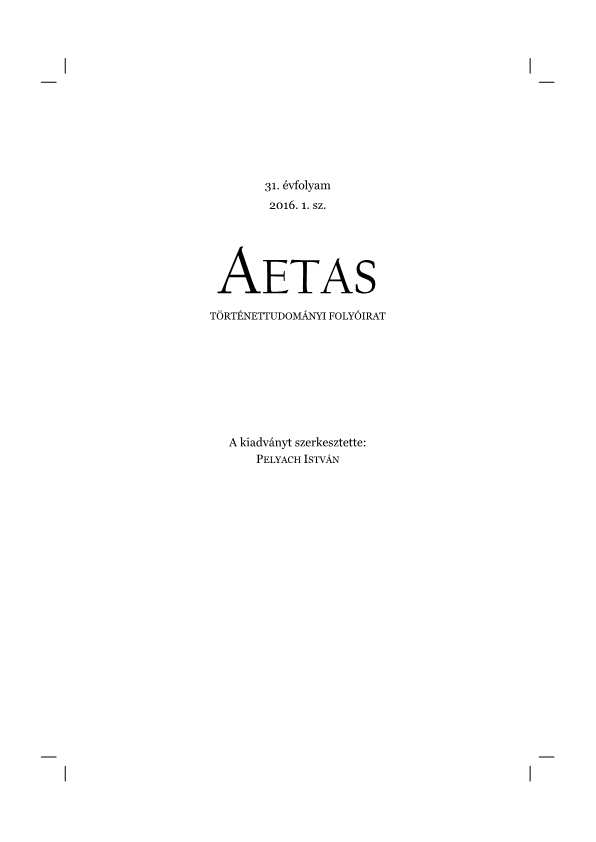Országgyűlési képviselők párthovatartozása és társadalmi háttere a dualizmuskori Debrecenben, Nagyváradon és közös vonzáskörzeteikben
The party affiliation and the social background of parliamentary representatives in Debrecen, Nagyvárad and their common metropolitan area in the age of the dual monarchy
Author(s): Ákos SzendreiSubject(s): 19th Century
Published by: AETAS Könyv- és Lapkiadó Egyesület
Summary/Abstract: The paper–like the research work preceding it–covers the analysis of the party affiliation and the social background of representatives elected between 1865 and 1918 in Debrecen (electoral district 1, 2, 3), Nagyvárad and the constituencies found in the common metropolitan area of the towns (based on their seats, the constituencies of Hajdúszoboszló, Berettyóújfalu, Buhar, Hosszúpály, Margitta and Székelyhíd). To quantify it, it examines the data of fourteen general elections and several by-elections–altogether 160 parliamentary seats won–from ten electoral districts. Despite the fact that the research focused on the election history of a clearly definable region of the historical kingdom of Hungary, the data was not analyzed and processed from a strictly local historical perspective but rather with the view to putting it into a national context. Beyond the main goals, the paper also answers questions such as: how typical was it of the constituencies to elect local politicians? We also analyze the education and previous work experience of politicians. Using a historical analysis both on a regional and national level, we do not just get a mosaic-like overview of the political and social characteristics of candidates elected in the electoral districts, but we also analyze the collected data in comparison to each other in the entire region in question, and examine them in comparison to the other towns or county districts of the country. Thus the conclusions drawn are not only interesting from a regional point of view, but they can also contribute to a better understanding of nationwide electoral tendencies in the era of the dual monarchy.
Journal: AETAS - Történettudományi folyóirat
- Issue Year: 2016
- Issue No: 1
- Page Range: 76-101
- Page Count: 26
- Language: Hungarian

